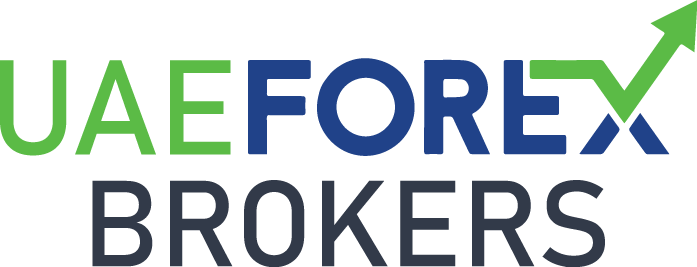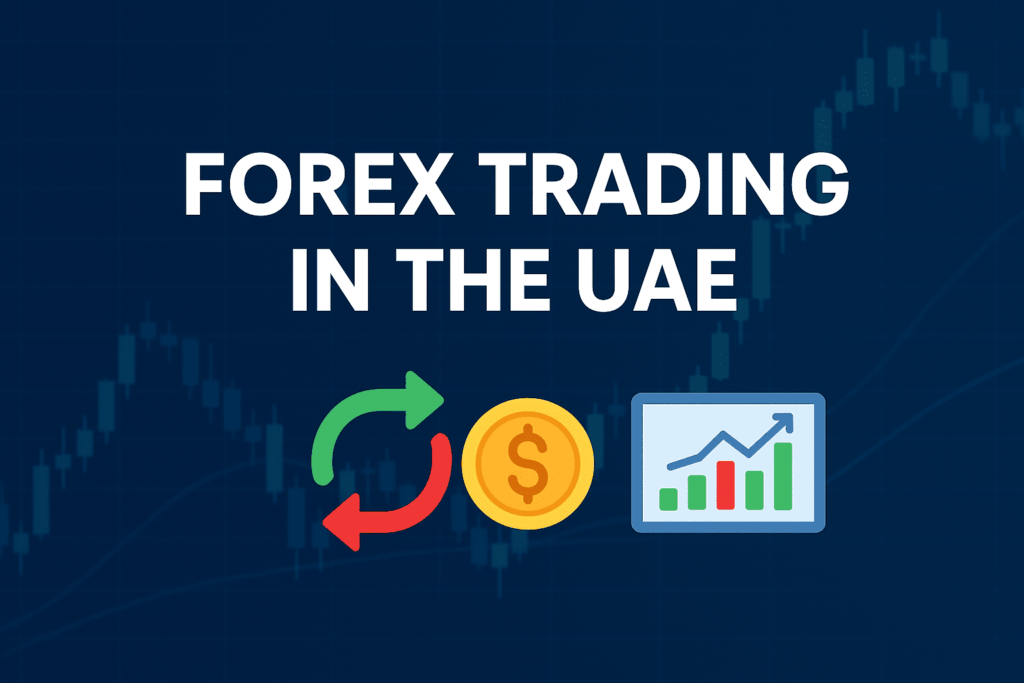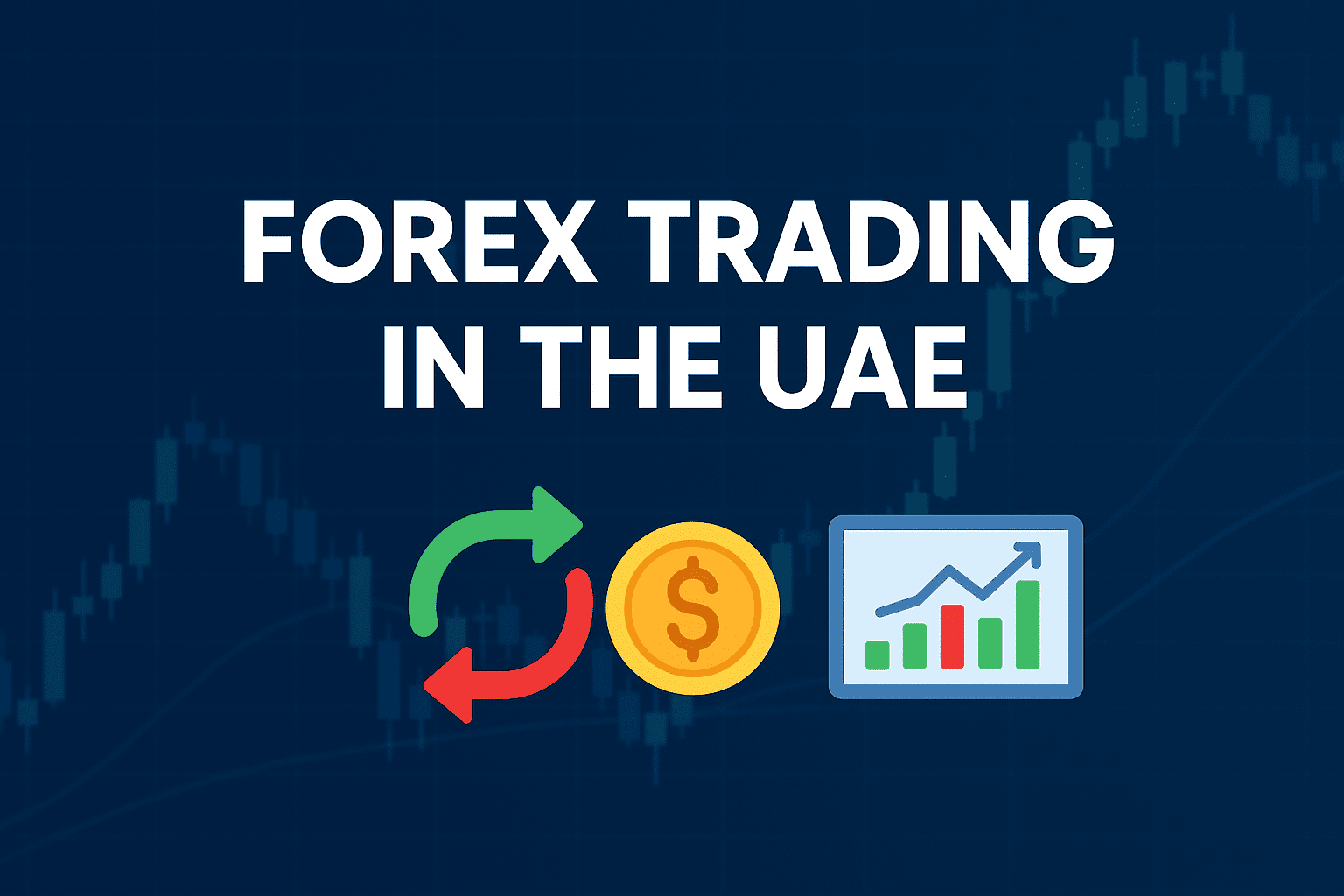In the heart of the Middle East, the UAE has rapidly positioned itself as a global hub for finance and investment. With increasing access to international markets and the growing interest in online trading, many UAE residents — both expats and locals — are turning towards Forex trading as a new avenue to generate income.
If you’re completely new to the concept, don’t worry. This guide will walk you through everything step-by-step. Whether you’re based in Dubai, Abu Dhabi, Sharjah, or anywhere across the Emirates, this guide is tailored to help you understand the fundamentals of Forex trading, so you can step into the world of currencies with confidence.
What is Forex Trading?
Forex, or “foreign exchange,” refers to the process of buying and selling currencies with the aim of making a profit. The Forex market is the largest and most liquid financial market in the world, with over $6 trillion traded daily.
Traders speculate on currency pairs — like EUR/USD or AED/USD — hoping to buy low and sell high (or vice versa).
Forex trading in UAE is legal and regulated by respected authorities such as:
- The Central Bank of the UAE
- DFSA (Dubai Financial Services Authority)
- ADGM (Abu Dhabi Global Market)
Step 1: Understanding the Basics of Currency Pairs
Currencies in Forex are always traded in pairs. The first currency in the pair is called the base currency, and the second is the quote currency.
For example:
- EUR/USD = 1.1000
This means 1 Euro is equal to 1.10 US Dollars.
In the UAE, traders often look at pairs like USD/AED or global majors like GBP/USD, EUR/JPY, etc.
Step 2: Choose the Right Forex Broker
This is a crucial step. You need a trusted and licensed broker to access the Forex market. Since you’re in the UAE, choose a broker that is regulated by DFSA, ADGM, or at least holds a license from a globally recognized authority like FCA (UK), ASIC (Australia), or CySEC (Cyprus).
Some features to look for:
- Demo account availability
- Low spreads and transparent fees
- Leverage options (but use it wisely)
- Arabic language support and local payment options
Below are some of the Popular Forex brokers in UAE :
- XM
- FX Pro
- IC Markets
- AvaTrade
- Exness
Step 3: Set Up a Trading Account
Once you choose a broker, sign up and verify your account. Usually, you’ll need:
- Emirates ID or passport
- Proof of address (like a DEWA or Etisalat bill)
- Bank account or e-wallet for funding
Many platforms support AED deposits via bank transfer, credit cards, and even local exchanges like UAE Exchange or Lulu Exchange.
Step 4: Learn to Read the Forex Market
You can’t just jump into trading blind. Learn how to analyze the market using:
- Technical Analysis: Studying charts and indicators (like RSI, MACD, moving averages)
- Fundamental Analysis: Following global news, economic indicators, and central bank decisions
UAE traders often keep an eye on:
- US Federal Reserve news
- Oil prices, as they impact the AED
- Local economic events that affect currency sentiment
Step 5: Practice with a Demo Account
Before risking real money, always practice on a demo account. This allows you to:
- Test your strategies
- Understand how platforms like MetaTrader 4 or 5 work
- Learn to control your emotions during trades
Most brokers offer demo accounts with virtual funds — no risk involved.
Step 6: Understand the Risks Involved
Forex trading is not a guaranteed way to make money. Yes, the potential is high, but so is the risk.
Common risks include:
- Overleveraging: Using too much borrowed capital
- Volatility: Market moves can be sudden and unpredictable
- Lack of knowledge: Trading without strategy or education
Always apply risk management techniques such as:
- Never risking more than 1-2% of your capital per trade
- Using stop-loss and take-profit levels
- Maintaining emotional discipline
Step 7: Start Trading Live – But Start Small
Once you’re confident, start trading with a small amount of capital. Even AED 500 can be a good starting point.
Stick to major currency pairs at first — they have high liquidity and lower spreads. As you gain experience, you can explore exotic pairs or even commodities and indices, depending on your broker’s offering.
Step 8: Continue Your Education
Forex is a lifelong learning journey. The market evolves, and so should your strategies.
Stay sharp by:
- Joining UAE-based trading forums or Telegram groups
- Attending seminars in Dubai or online webinars
- Following Forex analysts and financial news portals
- Reading books like “Currency Trading for Dummies” or “Trading in the Zone”
Some brokers also offer free education portals and Arabic content, which is great for local traders.
UAE-Specific Forex Tips
- Trade During Active Sessions: Dubai traders often follow the London and New York sessions for maximum volatility and opportunities.
- Be Aware of Islamic Accounts: Many brokers offer swap-free Islamic accounts, which are Shariah-compliant and suitable for Muslim traders.
- Watch for VAT and Tax-Free Status: Currently, Forex profits are not taxed in the UAE for individuals, but always consult with a tax advisor for updates.
Final Thoughts
Forex trading in the UAE offers a fantastic opportunity for those who are willing to learn, stay disciplined, and trade smartly. Whether you’re an ambitious expat in Dubai Marina or a local entrepreneur in Abu Dhabi, Forex can open doors to global financial markets from the comfort of your home.
But remember — treat it as a business, not a gamble. Start small, learn every day, and let time and patience work in your favor.


